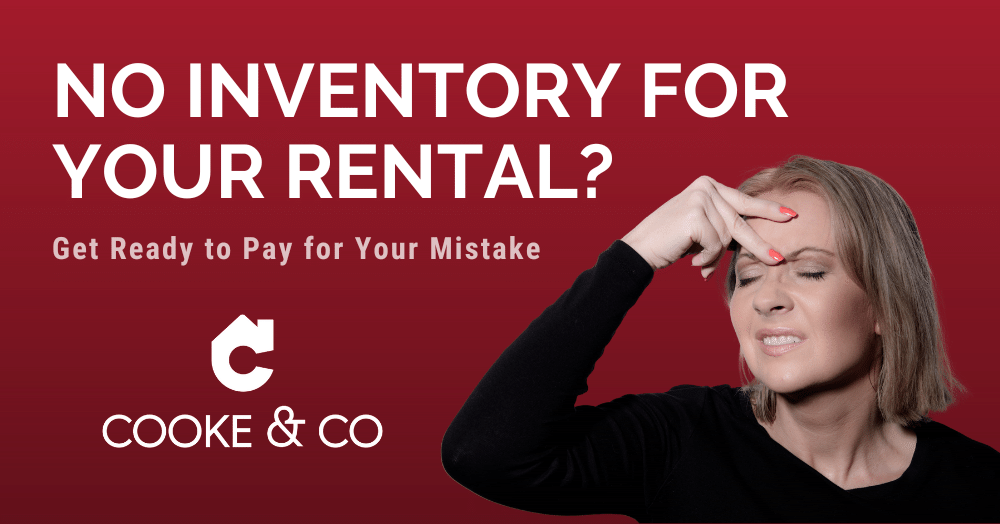Picture this
Your tenant of the past 12 months is leaving. You go to check them out and find a massive stain on the carpet, the sofa cover has been torn and there are lots of marks on the walls.
Uh oh.
You’re in a stand-off. The tenant denies causing the damage, but you know it wasn’t there when they moved in. However, unless you’ve documented the condition of the carpet, sofa and walls in an inventory before the tenant moved in, get ready to start paying out.

What is an
inventory?
It’s a detailed report about the property, fittings and furnishings. It details things like cleanliness, contents and the condition of the premises prior to a tenant moving in. It’s often supplemented with pictures (and videos) and provided to both parties at the start of a tenancy agreement.
Also known as a schedule of condition, a thorough inventory should rate different aspects of the property from ‘poor’ to ‘excellent’.
Why is it so
important?
While it’s not a legal requirement, it is essential. Yet many landlords fail to do it. Or they simply go through the motions and record only the bare basics.
Unfortunately, disputes between tenants and landlords are common. Especially at the end of a tenancy
And with deposits now held in tenancy deposit schemes, a landlord can’t just withhold part or all the deposit in the event of any damage. Instead, the dispute must be officially resolved, and an inventory is essential to help reach a solution.
When should an
inventory be compiled?
Before the tenant moves themselves or any of their possessions into the property.
Who should do an
inventory?
The inventory is the landlord’s responsibility. You can do it yourself, ask your agent or organise a professional inventory company to perform it. You should keep a copy of the inventory and provide one to the tenant. Both parties should sign and date the inventory so that you’re in agreement.
At the end of the tenancy, the inventory should be revisited so the condition of the property and any contents can be checked.
It can also be a useful reference for landlord inspections during the tenancy period.
Is an inventory
necessary for an unfurnished property?
Yes. An inventory is always necessary.
From light switches to kitchen cupboards, garden fences to plug sockets – an inventory details the minutiae of a rental property and the condition of every aspect.
If you’re searching for new tenants, get in
touch with our lettings team at Cooke & Co
Estate and Letting Agents .

No comments
Leave a comment